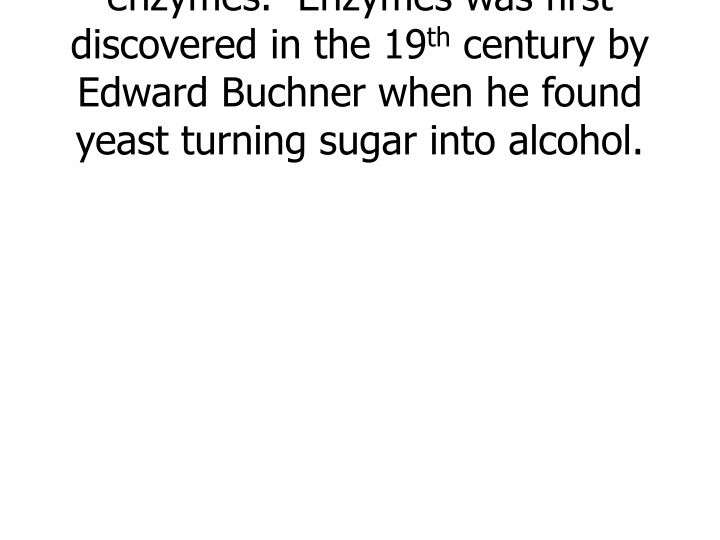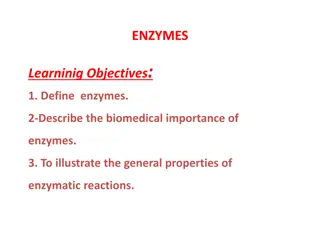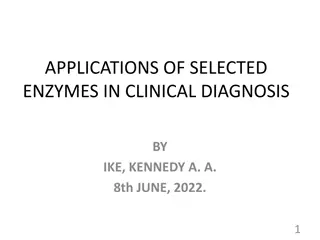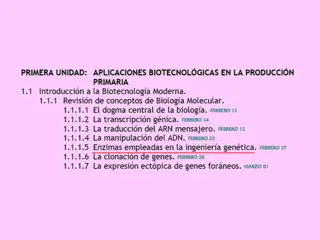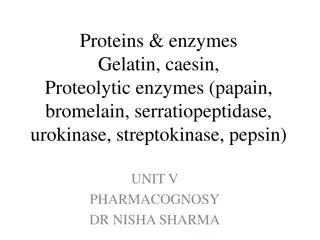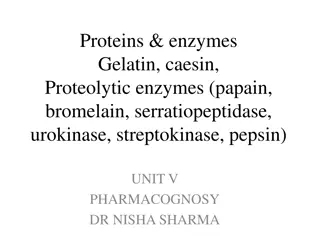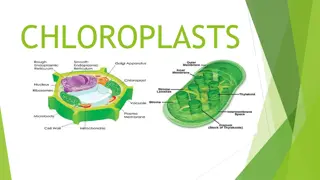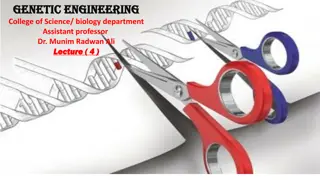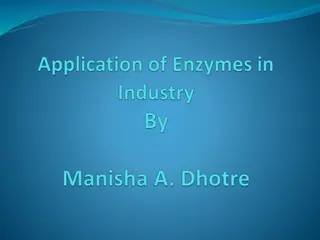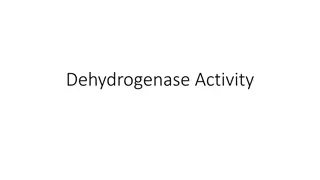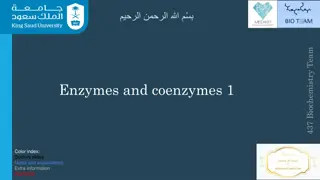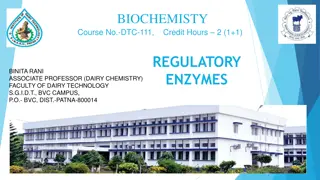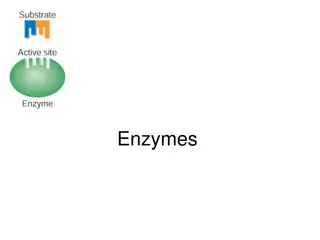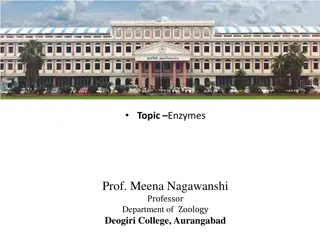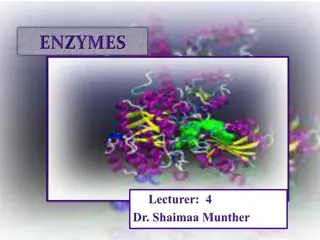Fascinating Insights into Enzymes and Their Properties
Enzymes, discovered by Edward Buchner in the 19th century, play a crucial role in converting substrates into products with high efficiency. These catalysts exhibit remarkable characteristics such as high specificity, the ability to work on various reactions, and the need for only small amounts to catalyze significant transformations. By understanding enzymes and their properties, we gain valuable insights into the intricate processes that occur in biological systems.
Download Presentation

Please find below an Image/Link to download the presentation.
The content on the website is provided AS IS for your information and personal use only. It may not be sold, licensed, or shared on other websites without obtaining consent from the author.If you encounter any issues during the download, it is possible that the publisher has removed the file from their server.
You are allowed to download the files provided on this website for personal or commercial use, subject to the condition that they are used lawfully. All files are the property of their respective owners.
The content on the website is provided AS IS for your information and personal use only. It may not be sold, licensed, or shared on other websites without obtaining consent from the author.
E N D
Presentation Transcript
enzymes. Enzymes was first discovered in the 19thcentury by Edward Buchner when he found yeast turning sugar into alcohol.
Properties (Characteriscs) of enzymes
amounts i.e. only a small amount of enzyme is necessary to convert a large amount of substrate into product. The same substrate could be utilized by different enzymes e.g. Phosphate hexose
Fructose Glucose-6- phosphate (substrate)
-6- Isomerase
Phosphogluco mutase phosphate dehydrogenase glucose-6-
Glucose-1-phosphate phosphoglucolactone 6-
The same enzyme could act on different chemical reactions e.g.
Sucrose + Inorganic gluycosyl Sucrose B-D-glucose-1- phosphate
Phosphate transferease +
Sucrose + L-sorbose glucose glucose-sorboside sucrose
(monosaccharide) transferease +
Enzymes work at narrow range of temperature. Optimum temperature for their working is 40oC and they become denatured (killed) at 60oC.
function around neutral pH (pH 5- 7). However, pepsin (found in stomach) works at pH 2-3 and trypsin (found in the duodenum) works at pH 8.5
Atalytic actions of enzymes may be specific. Thus an enzyme which catalyses one-reaction may not catalyse another e.g. invertase works only on sucrose
sucrose invertase glucose + fructose amylase works only on starch starch amylase Maltase works only on maltose Maltose maltase zymase works only on glucose maltose glucose
Glucose zymase CO2+ethanol
Enzymes are not destroyed by the reactions they catalyzed and could therefore be used and used again.
chemical compounds like mercury chloride (HgCl2), silver chloride (AgCl2) and hydrogen cyanide (HCN).These inactivate the enzymes for example HCN blocks the enzymes involve in respiration.
Mechanism of action (working) of enzymes
This is explained by two hypotheses
inform of heat (temperature) to activate passive A by bombarding A s molecules so that they could become activated and later turned into B s molecules.
The energy above average that is required A molecules to react and be converted into B molecules is the activation energy of the reaction.
Enzymes are believed to catalyze reaction by lowering the activation energy.
2H2O2 catalase 2H2O+2O2
The activation energy in the absence of catalase is 18,000 cal/mol while in the presence of catalase, it is 6,400 cal/mol. Lock and Key hypothesis: The enzymes is believed to be the padlock and substrate the key. Enzymes (the padlock have active centres which must fit the substrate (the key) before chemical reaction could take place.
Enzymes are generally of 2 types, namely Intracellular enzymes (enzymes working inside the cell). Extracellular enzymes ( enzymes working outside the cell).
acts on arginine, tryrosinase which acts on tyrosine, lipase which acts on lipids, proteinases which acts on proteins and carbohydrases which acts on carbohydrates and maltase which acts on maltose.
enzymes), oxidases (oxidation reaction enzymes), phosphorylases (phosphate adding and deleting enzymes). In both cases above, the suffix ase or in is added to the name of the substrate or reaction type.
Specific enzymes types Hydrolyses(hydrolytic enzymes)
These catalyse the addition of the elements of water to specific bond of the substrate
RCO OR HOH RCOOH + R`OH
e.g. lipases, carbohydrates, proteases.
ii. Oxidases (oxidation reduction enzymes)
these catalyse the removal or addition of hydrogen, oxygen or electrons from or to the substrate, which is thereby oxidized or reduced in the process.
RH + HA R + AH2(removal of H2)
